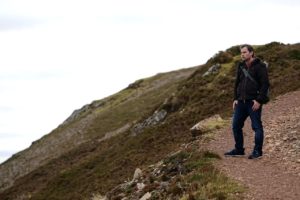Every hiker walks, but not everyone who walks hikes.
Both walking and hiking have their own benefits, most noticeably, they are both similar in helping your body get more fit.
But what separates the two? Is it just their terms? Is it just simple semantics, or is there more to it? If we wake up and move to the bathroom, we know that it is correct to say that we walked to the bathroom, but why isn’t it correct to say that we hiked to the bathroom?
And most importantly of all, is one method better than the other if you want to exercise?
What is walking?
Walking is defines as traveling by foot and using your own feet as a way to get from one place to another with a certain, casual pace. There is no minimum or maximum distance considered for walking, so 3 steps or 3000 steps can both be considered walking all the same, assuming you keep up the same pace and never break into a run.
Humans walk everywhere every day. From walking to the kitchen from the living room to walking from your house to the bus stop, walking is an essential part of our lives. We may do it as a necessity to get us from one destination to the next, but we may also use it as a way to keep our body fit through exercise. Sometimes, it is both at the same time.
Walking is most commonly done on territory that is more even and controlled, such as urban environments.
What is hiking?
In comparison to walking, hiking is an activity used to describe walking, but in different natural environments. What this means is that hiking is a subset of walking. See now what that sentence at the start means?
This means that hiking is done in places like forests, mountains, deserts, the countryside, and footpaths.
Another thing about hiking is that this is done in locations that are much more challenging than an average walk. While walking in some place like the park is relaxing, hiking can be defined as more physical demanding, as you will have to cross obstacles, climb over rocks, and go through rugged terrain, which is far different from the even ground that you might be used to back at home.
This is also why the sentence “I walked to the bathroom” makes sense, but not “I hiked to the bathroom” if you are at home; the environment is controlled and requires no exertion of effort.
Though if you somehow find yourself stuck in a forest and the nearest bathroom can only be reached through a long trek, then yes, it is valid. This is more semantics, as while true, the situation is highly unlikely.
Which activity is better?
As with everything, the answer is “It depends.”. Context is always important. Let’s try to compare some aspects of hiking and walking.
- Convenience
Walking can be done practically anywhere. Heck, you don’t even need to think about it, even just going around the house is considered walking already. You can choose to walk wherever you please, whether it is in the safety and confines of your home, or the more relaxing and outdoors-y parks outside.
Hiking, in comparison, is not as convenient. First, you need to find a trail that suits you. Not every hiking trail will be a good fit for you. Next, you will need to actually get to the trail in question, which will take some time. Only then can you begin your hike.
- Safety
Walking is mostly safe, as you will be sticking in safe paths, roads, and familiar territory. These controlled areas greatly reduce risk of injury from your environment. The risk of things like dehydration and injuries from slipping in uneven land is minimal, for instance.
Hiking is all about the thrill, which means risk is expected on the trail. Some trails like forest trails are safer, compared to mountain or desert trails. The land here, being mostly natural and untouched by humans, is untamed and unsteady to walk on. You can’t be perfectly sure of your safety, even with the best precautions.
- Equipment needed
Walking does not require a lot of gear, if at all. At most, you might change into a more suitable outfit that you can sweat on while walking or bring in a treadmill at home if you want to have a semblance of a workout at home.
Hiking requires a lot of gear – the wild is an untamed place, and who knows what could happen to the unsuspecting hiker. Backpacks filled with essential gear such as extra clothes, food, first aid kits, lamps, and more are mandatory to prepare for any possible contingency.
- Environment
The convenience of walking correlates to the type of environment that you would see. If you walk around your house, you won’t be getting any new sights. If you walk in the park, you probably also won’t get any new sights, but you will certainly get some fresh air.
Hiking is all about sights. The beauty of the views that can be seen on the top of mountains or in the middle of a forest easily trumps over any local park in terms of aesthetic and beauty alone. You will not get these kinds of sights from just walking around town, you need to push yourself to actually see them.
- Exercise done
Walking around burns calories. The more you walk, the more you burn, which is as simple as that.
Hiking also burns calories. However, the rugged and more challenging terrain that the environment for this activity provides requires much more physical exertion. Though, much harder, it also means that your body will become much more fit in the process.
Bottom line
Walking is universally understood as a more casual activity that anyone can undertake anytime and anywhere. Hiking takes a little more effort as an activity, and its locations are not as varied as simply walking, but the rewards are much more beneficial if you are someone who wants to go all out and experience new sights that you normally do not see.
If you are someone who does not have a lot of time on their hands, however, then walking is still a good way to get some much-needed exercise for your body.



